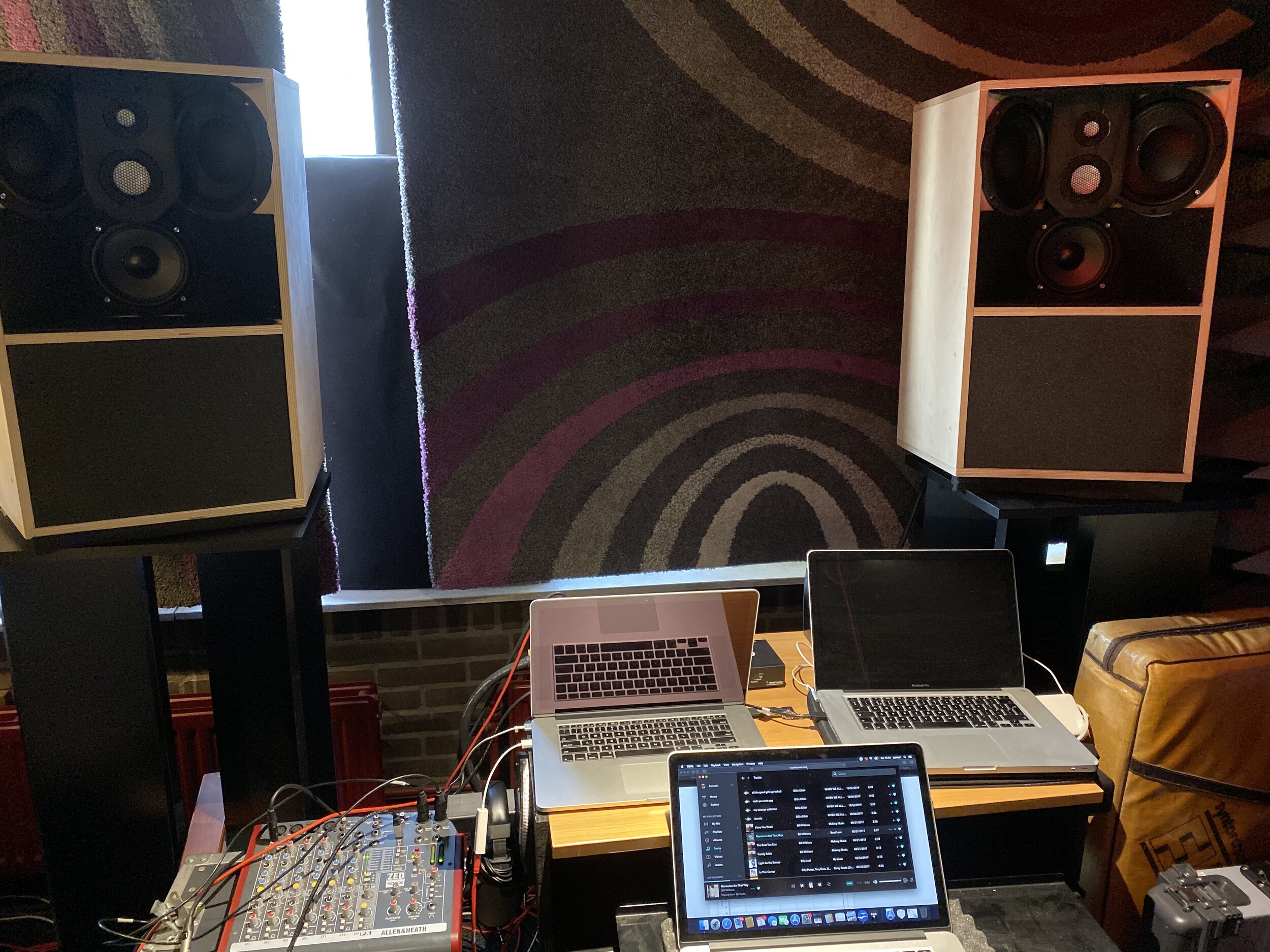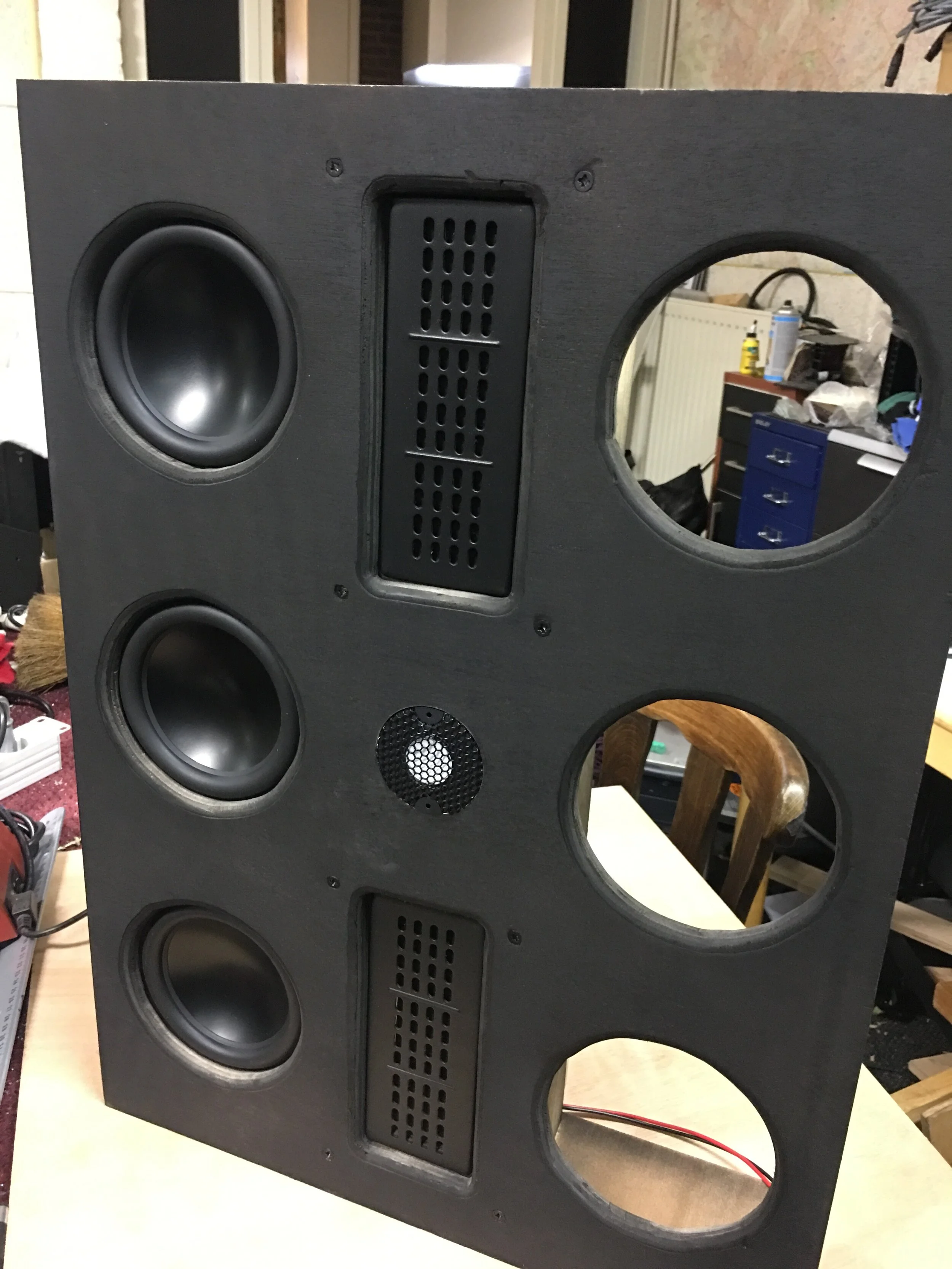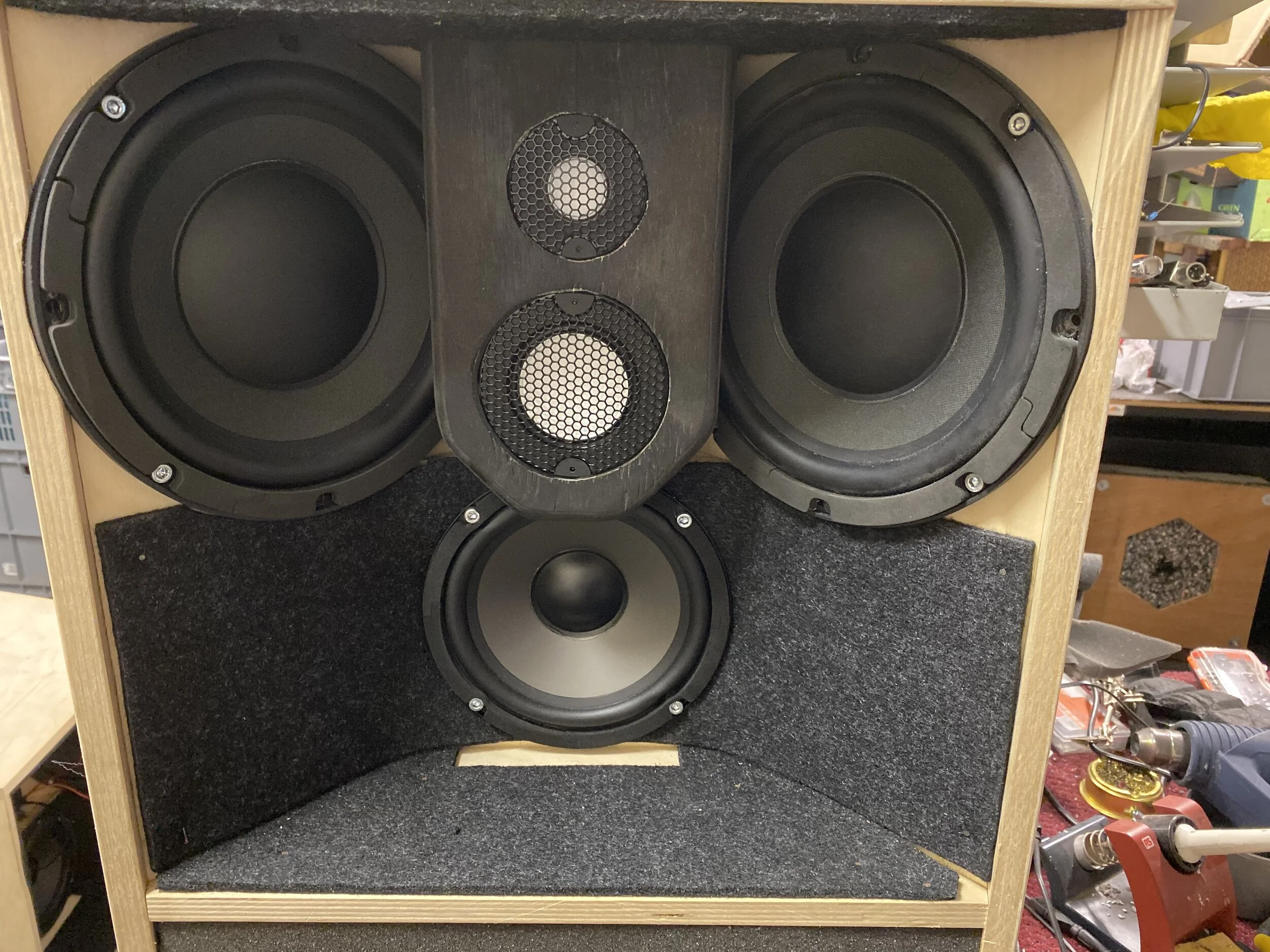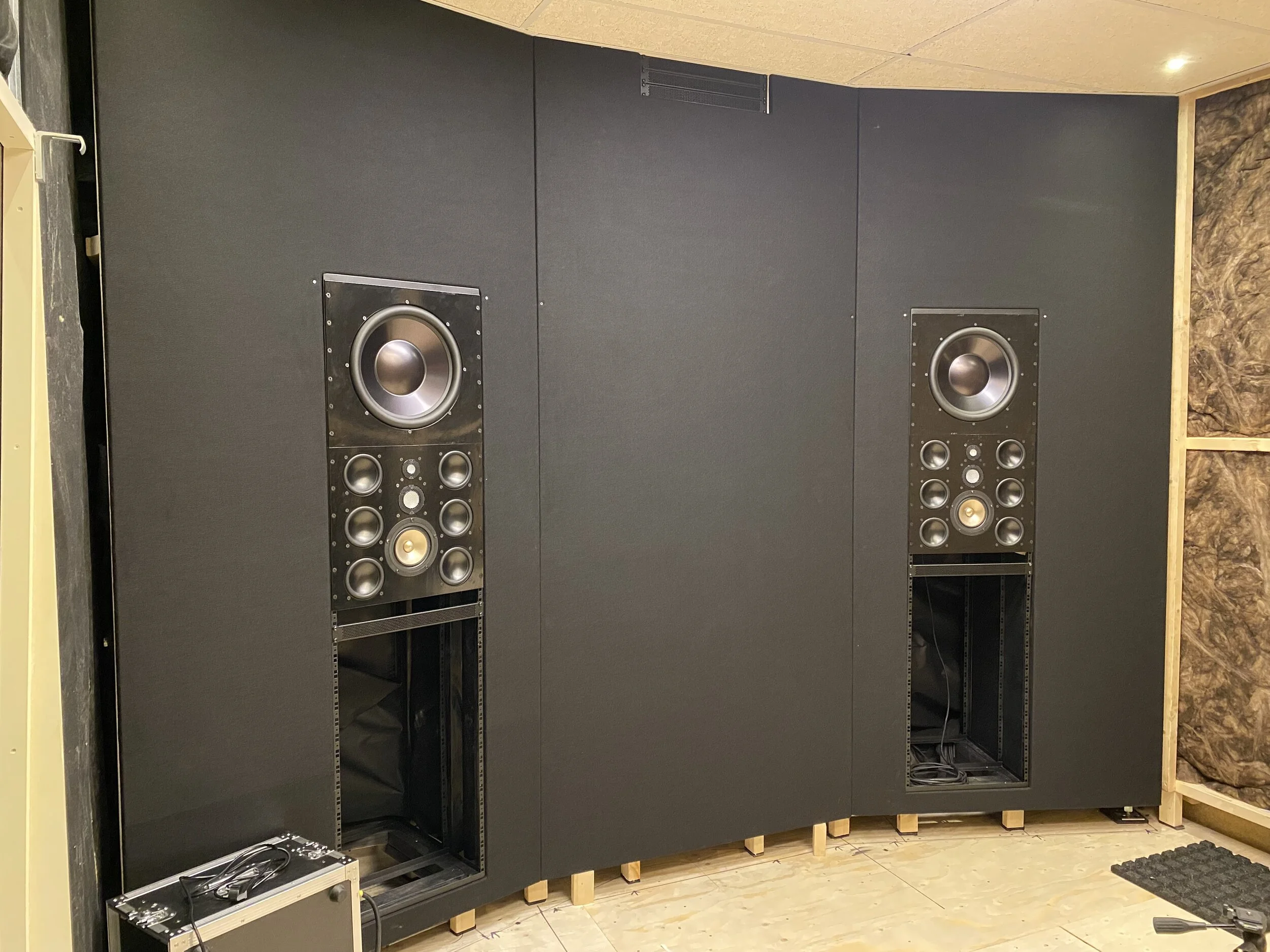
The Journey
Obtaining the Unobtainium…
After improving and tuning a lot of existing monitoring systems we were faced with a big challenge.
A new system to be build into the Dutch Broadcast Truck Music 1.
Originally fitted with Genelec 1032 main speakers, we knew there was an opportunity to take the monitoring setup to another level.
We had experience in converting Genelec 1031 speakers in other mobiles and were always faced with the limitations of them. Though expanded with extra subwoofers these things got more headroom; essentially it’s still just a two-way speaker.
With the help of modern DSP possibilities and know-how there were a lot of options to integrate specialised speakers for different frequency bands without worrying about their unique phase behaviour. Every speaker is tailored to an ideal curve resulting in a system that behaves like one driver.
The design goals with this new speaker:
Optimum impulse behaviour and minimal time colouration/ringing
The SPL level of a big mains speaker system
The sweet spot has to be attainable at a short listening distance, though the sound stage should extend to the back of the room
The physical size and especially the depth should be kept at a minimum
The subs should be dedicated to each channel, mono sub leaves a crippled stereo image
Following the above we came up with:
We needed small, lightweight and wide bandwidth transducers used in their optimal frequency range. They also have to be mounted close to each other to enable wide overlaps in their crossover regions and maintain even off-axis behaviour.
The enclosure shall not be a resonator type! More so we needed to mount a big number of drivers in a small space.
Since we found that a loudspeaker membrane is like an opened valve for reflections and build up effects in an enclosure, conventional loading would not suffice. This led to a more resistive loading of the back wave; though the back wall is close to the drivers, it’s no solid surface (which would reflect terribly).When facing a large desk close to the speakers; don’t divide tops and subs over/under the desk.
Though the ground coupling can increase the output level of subwoofers; first of all you want a coherent sound stage at the sweet spot. The path length difference when they are separated leaves you with making compromises in the tuning.
And now, some pictures of that challenge!
Faux Coax
The prototype at the beginning of the journey to the Quasar system. The speed of these mid and high drivers got us looking for more. White Sea Studio had a lot of fun with this pair.
More isn’t always better…
The semi-coax system was so convincing it was logical to test what would happen with more mid drivers and different tweeter.
Point your barrel
The strong point of the semi concentric setup was definitely it’s tight controlled coverage with a very clever coupling of the drivers.
In listening tests and through multiple iterations we found however this setup wasn’t able to provide an even coverage angle over the whole spectrum. The impulse behaviour and output of this setup was truly amazing; but this drawback left us looking for a different solution.
Stay in line
To get a more even coverage we’ve tried several setups where the mid and high drivers were situated in a line. We needed the output of two midrange drivers (planar magnetic in this case) but couldn’t live with the vertical beaming.

Pack the punch!
We started looking for a single mid driver to keep up with the rest of the system, without using horn loading
One way or another
The new mid driver left us with the need and search for an extra mid speaker to reach the needed crossover point without the lobing effects of six low woofers.
A collection of the mid drivers considered and tested…
So many drivers WOOD not fit
Together with the new loading for the woofers it seemed logical to go for STEEL!

Mini woofers to match?
This prototype was so beautiful and agile but honestly left the search for serious SUB…
Size does matter…
After various tries this 15” ALU cone matches best in ultra low end extension and high speed bass.
Still:
Pictures can’t tell you how things sound
A memorised collection of monitoring setups and sound stages cannot be shared
To every engineer who’s not used to speakers with little time coloration/clutter: grab a chance to listen to a Quasar system, it alters your auditive mindset and trains your ears. But be warned, it can be addictive!
Some extra pictures of the process:


































